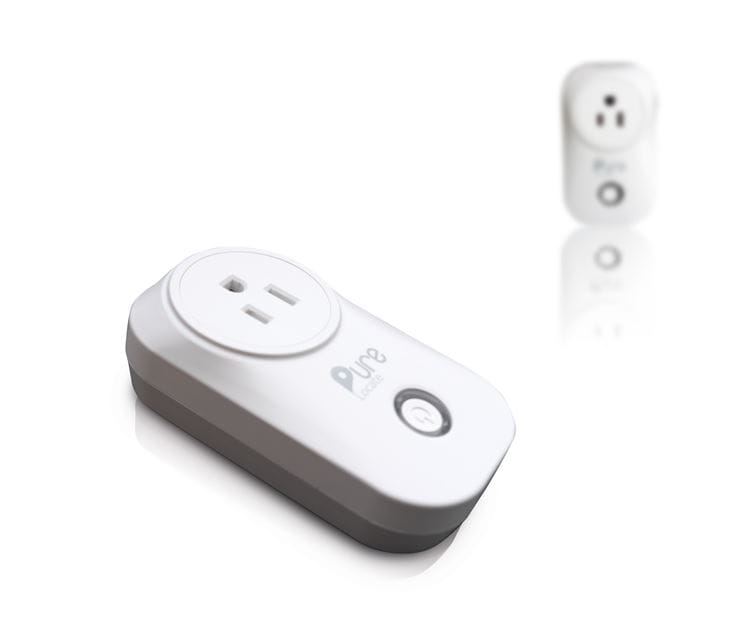Nordic Semiconductor today announces that an ultra-simple Bluetooth® Low Energy (LE) AC plug-in wireless hub and room-level ‘stick-on’ beacon asset tracking solution developed by U.S. Internet of Everything (IoE) data automation specialist, Sixgill, employs Nordic’s nRF52832 Systems-on-Chip (SoCs).
Sixgill claims its
Sixgill Sense™ Hospital Asset Orchestration solution could help hospitals battling Covid-19 by enabling them to accurately track scarce portable equipment assets such as ventilators, defibrillators, and various kinds of medical pumps to deliver critical time and operational efficiency savings at a time when they need it most. And this includes tracking the location of assets within rooms and hallways using a technique based on Bluetooth LE beacon Received Signal Strength Indication (RSSI). All collated data is made available to hospital staff on a Sixgill developed cloud-based control panel. This graphically displays all tracked assets with color-coded circles to show various status alerts (e.g. red to show assets that have been recently moved).
Sixgill says the rapid installation speed of its solution comes from the simplicity of the drill-and-screw-free design. This comprises two parts. First is AC plug-in wireless hubs (which are based on a pass-through socket design to ensure they don’t consume valuable power points) that are plugged into a single mains power socket in each room or hallway where asset tracking is required. Each one can cover a space of around 25 x 25-ft / 625 ft2 (7.6 x 7.6 m / 58m2). The mains plugs have a Nordic nRF52832 installed to look and listen for Bluetooth LE beacons, and Wi-Fi to communicate to the cloud.
The second part of the Sixgill solution comprises stick-on Bluetooth LE beacons that are attached to any asset the hospital would like to track. Because of the ultra-low power consumption of the Nordic nRF52832 SoC each beacon does not need to be recharged once installed, and its battery will last 3-5 years depending on duty cycle. Sixgill says its Sense solution is massively scalable to support an unlimited number of Bluetooth LE beacons. As such it can enable a large hospital to continuously track tens of thousands of assets.
This entire solution is also said to be functional after a quick set-up procedure that Sixgill says often begins with a hospital’s floor maps, and lists of assets and their locations, as well as the hospital’s Wi-Fi credentials.
“Now a hospital is able to capture all asset information, transmit data and alerts as needed to appropriate staff, and reduce if not eliminate errors and delays when delivering critical assets to where they are needed,” says Joan Silver, VP of Product Marketing at Sixgill. “By collecting meaningful data and analyzing it over time hospitals are also able to gain insights that optimize their operational and planning efficiencies. Our solution even supports AI and machine learning to continuously improve a hospital’s understanding of its portable asset utilization patterns to enable prediction of needs during both normal operations and emergency surges.
“The number one benefit of our solution, however, is reducing the time it takes hospitals to get their portable equipment requests served from days or hours to minutes. Both during this Covid-19 crisis and after, that’s something all hospitals facing portable equipment scarcity issues will appreciate. Staff get the equipment they need when they need it, and patients get the care they need as soon as they need it.”
Sixgill says it employs Nordic Semiconductor wireless technology because of its simplicity, ease of development, and reliability. It says it has used Nordic’s chips in multiple projects and that they have proven time and time again to be extremely high-quality performers. “Wireless ultra-low power consumption removes customer objections to extensive new wiring or incessant battery maintenance,” states Silver.
“Right now during this Covid-19 crisis hospitals around the world have never had a more urgent need to efficiently and effectively track and manage their scarce portable medical equipment assets, particularly in emergency rooms and overflow locations such as hallways and temporary surge facilities,” comments Geir Langeland, Nordic Semiconductor Director of Sales & Marketing. “And I welcome all and any technology solutions that could help these hospitals right now and I truly admire and respect how hard the world’s technology community is working to create and deploy such solutions.”

